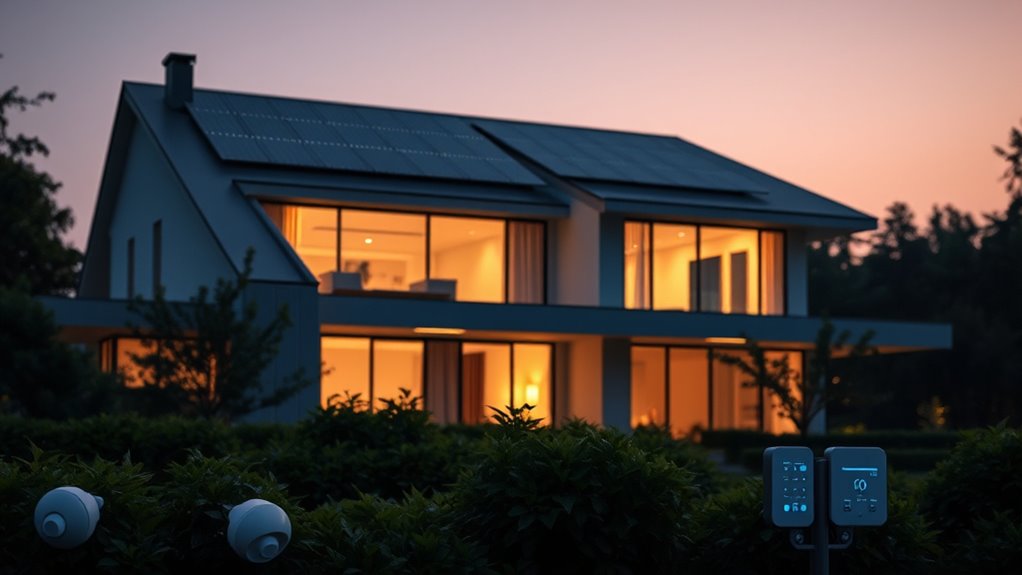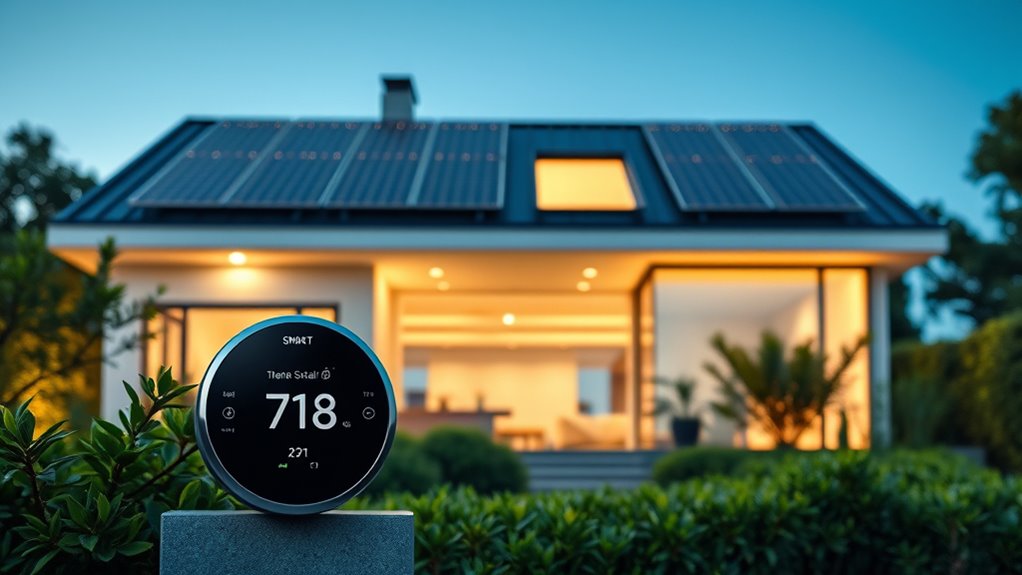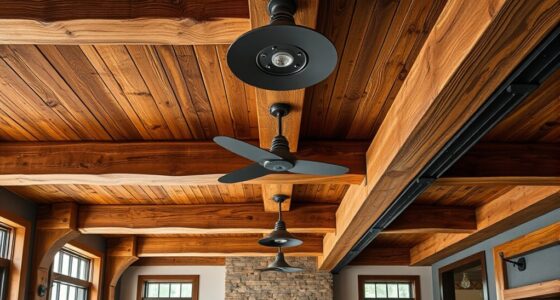AI-optimized energy systems in luxury homes actively manage your energy use by balancing renewable sources, analyzing real-time sensor data, and adapting to changing conditions. They intelligently prioritize solar power, store excess energy, and coordinate with the larger grid to boost efficiency. These smart systems monitor equipment for early issues and learn your habits to customize comfort while reducing waste. To discover how these innovations can transform your home’s footprint, keep exploring the possibilities.
Key Takeaways
- AI-driven systems optimize energy consumption by intelligently balancing renewable sources and grid integration in luxury homes.
- Real-time data analysis enables dynamic energy adjustments based on weather, demand, and user habits.
- Predictive maintenance ensures equipment operates efficiently, reducing waste and preventing costly failures.
- Smart grid connectivity enhances overall energy efficiency and supports sustainable resource utilization.
- Personalized energy management adapts to homeowner preferences, maintaining luxury comfort while minimizing environmental impact.

Artificial intelligence is transforming how we manage energy, making systems more efficient and responsive than ever before. In luxury homes, AI-driven solutions are streamlining energy usage, reducing waste, and helping homeowners minimize their environmental footprint. One of the key ways AI achieves this is through renewable integration, where smart systems seamlessly incorporate solar panels, wind turbines, or other renewable sources into the energy grid. With AI, your home can intelligently balance energy flow, maximizing the use of clean energy when it’s available and reducing reliance on traditional power sources. This not only lowers your carbon footprint but also lowers energy costs over time.
AI-powered systems continuously analyze real-time data from various sensors, enabling your home to adapt dynamically to changing conditions. For instance, during peak sunlight hours, your system can prioritize solar energy, storing excess power in batteries for later use. When clouds roll in or demand spikes, AI adjusts the energy distribution to ensure your home remains comfortable and efficient. This intelligent renewable integration ensures you’re making the most of renewable resources without manual intervention, providing a sustainable yet highly responsive energy system. Additionally, incorporating smart grid technology can enhance the coordination between your home and the broader energy network, further optimizing overall efficiency.
Another critical aspect of AI in luxury homes is predictive maintenance. By constantly monitoring equipment like HVAC systems, water heaters, and solar inverters, AI can forecast potential failures before they happen. This proactive approach means you avoid costly repairs and unnecessary downtime, keeping your home running smoothly. Predictive maintenance also optimizes equipment performance, ensuring systems operate at peak efficiency, further reducing energy consumption. When your HVAC system is predicted to need maintenance, AI can schedule service automatically, preventing energy waste and extending the lifespan of your appliances. This not only saves money but also contributes to a greener lifestyle by avoiding overuse and inefficiency.
Furthermore, AI systems learn your habits and preferences over time, fine-tuning energy usage to match your lifestyle. If you tend to leave lights on or set your thermostat to a specific temperature at certain times, the system adapts accordingly, optimizing energy flow without sacrificing comfort. This personalized approach ensures that your luxury home remains a haven of convenience while staying environmentally responsible.
Frequently Asked Questions
How Do AI Systems Adapt to Changing Weather Patterns?
AI systems adapt to changing weather patterns by continuously analyzing real-time data, enabling weather adaptation for your home. They adjust heating, cooling, and shading settings to optimize comfort and efficiency, boosting your climate resilience. By learning from weather trends, these smart systems proactively prepare for fluctuations, ensuring your home remains comfortable and energy-efficient regardless of weather changes. This proactive approach helps you save energy and enhances your overall climate resilience.
What Are the Initial Costs of Implementing Smart Energy Systems?
The initial costs of implementing smart energy systems vary, but you should consider a thorough cost analysis to understand expenses. You might face installation challenges like integrating new technology with existing infrastructure or ensuring proper connectivity. While upfront costs can seem high, investing in these systems often pays off through energy savings and efficiency. Be prepared for potential customization needs and professional installation, which can influence the overall investment required.
How Secure Is the Data Collected by These Smart Systems?
The data collected by smart systems is generally secure, but you should stay vigilant. Manufacturers implement strong cybersecurity measures like encryption and regular updates to safeguard your data privacy. However, no system is completely immune to cyber threats. You can enhance security by using strong passwords, enabling two-factor authentication, and staying informed about potential vulnerabilities. Being proactive helps ensure your data remains private and protected.
Can AI Optimize Energy Use During Power Outages?
During power outages, AI can optimize your energy use by activating battery backups and user automation. It detects outages instantly and shifts to stored energy, ensuring your home stays powered efficiently. This smart system predicts needs and manages resources seamlessly, giving you peace of mind. You might wonder if it’s enough—rest assured, AI’s real-time adjustments keep your home functioning smoothly, even when the grid fails.
What Are the Long-Term Maintenance Requirements for These Systems?
You’ll need to follow regular maintenance schedules to keep your smart energy systems running smoothly. This includes checking for software updates and performing hardware inspections. Over time, system upgrades may be necessary to improve efficiency and security. Staying on top of these tasks ensures your system functions at its best, reduces downtime, and extends its lifespan. Regular maintenance and timely upgrades are key to maintaining the long-term performance of your energy-saving smart systems.
Conclusion
By adopting AI-optimized energy systems, you can reduce your luxury home’s carbon footprint considerably. In fact, these smart systems can cut energy consumption by up to 30%, making your home more sustainable and cost-efficient. Imagine saving money on energy bills while also contributing to a healthier planet. Embracing this technology not only benefits your lifestyle but also helps combat climate change—proving that smarter energy use truly makes a difference.









